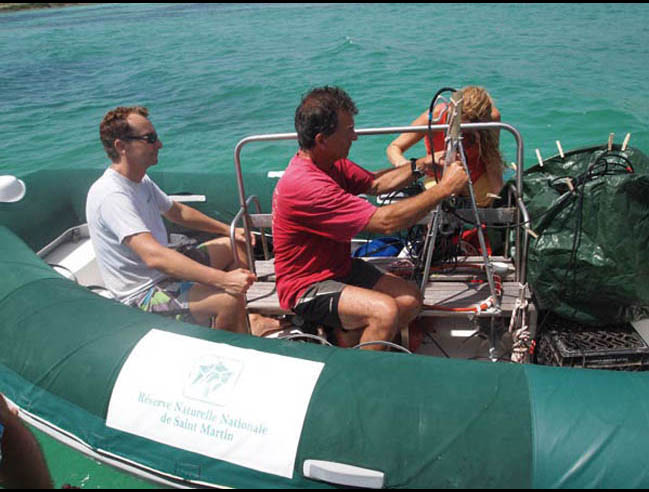Underwater sea grass beds, these ordinary marine zones of no particular interest to amateur divers, provide a nursery for numerous species, and offer them protection and food. From mangroves to coral reefs, they represent a fragile, endangered ecosystem that plays a determining role in the purification of coastal waters. The state of their health is as important as that of coral for a project referred to as IFRECOR (French Initiative For Coral Reefs), which has established an observatory for overseas sea grass beds. Their goal is to report on the condition of marine plants and combine all possible information in order to coordinate future activities and propose a robust, user-friendly methodology to follow the development of the sea grass in these zones, that have not yet been studied. With this in mind, Christian Hily, a researcher at the European Institute for Marine Studies in Brest, was sent to Saint Martin by IFRECOR from May 29-June 1, 2012. This scientist had visited the island in 2011 to do a report on the sea grass beds, based on scientific studies done by the Réserve since 2007. This time, his task was to test a new methodology using an underwater camera pulled by a boat. This system allows for the observation a larger perimeter around the sea grass beds to note their state of health, the species present in each area, their density, and the fauna that live there, as well as the quality of the sea grass between the shore and the reef. These observations will be compared to those done by the Réserve and increase the preciseness of available information.
Four species of marine plants in SXM
These sea grass beds consist of flowering marine sea grasses (phanerogams),of which four species coexistent in Saint Martin.
The two principal ones are Thalassia and Syringodium, while the other two are less prevalent.
One of these, Halophila Stipulacea, originally from the Indian Ocean, is invasive.
Its presence was suspected for the past two or three years and has now been confirmed, as the sea grasses are rapidly spreading.

















